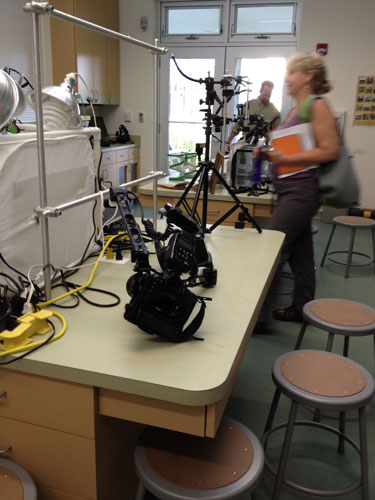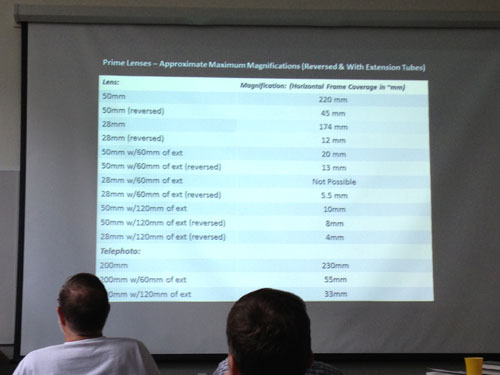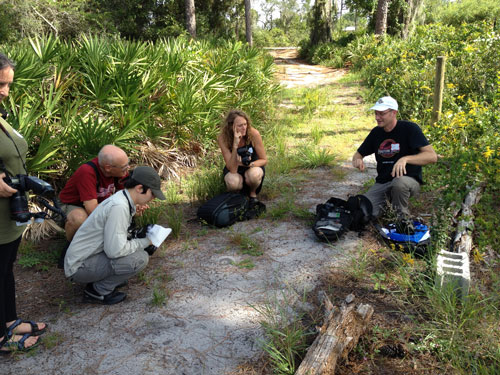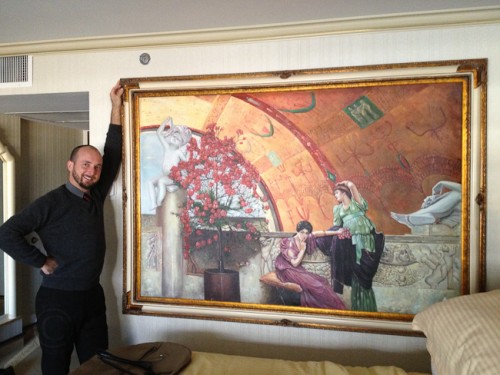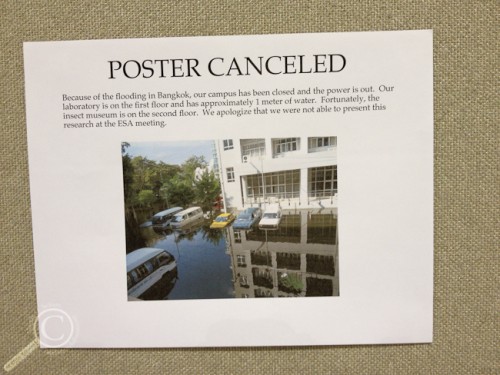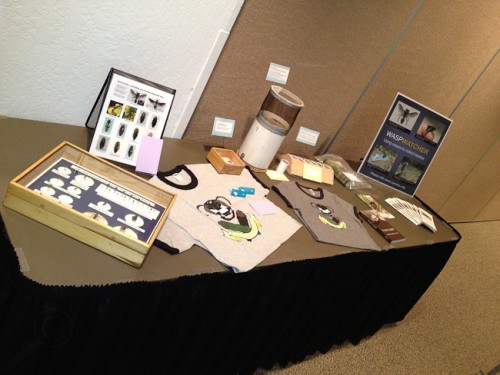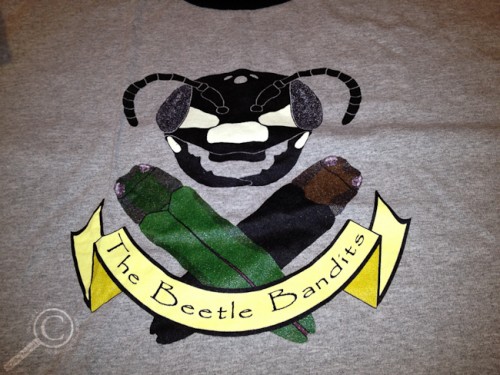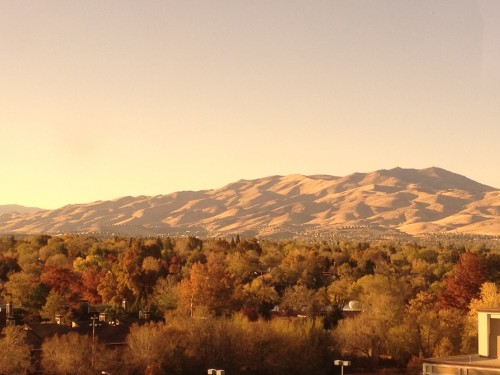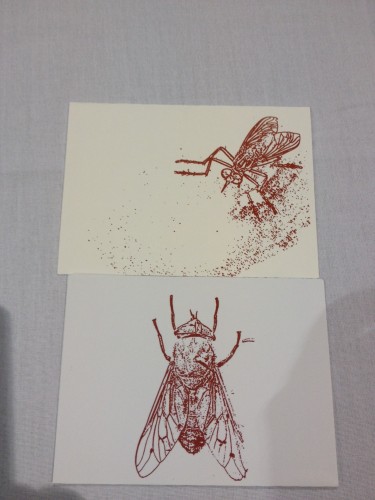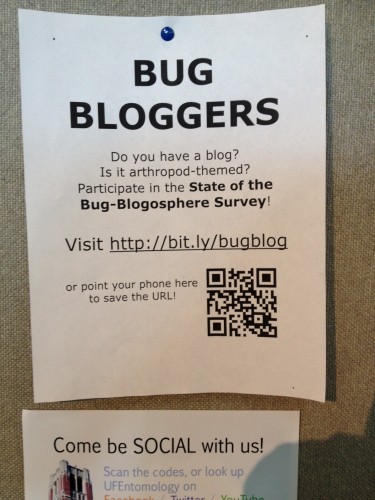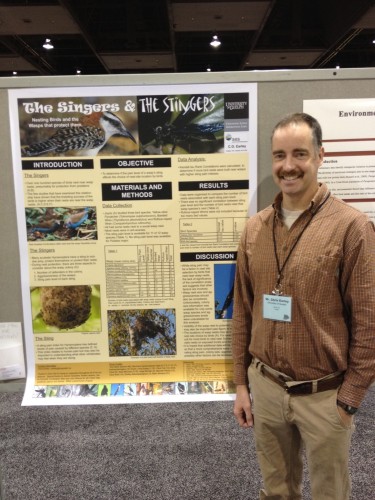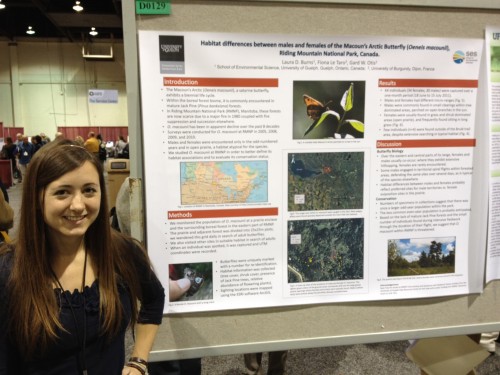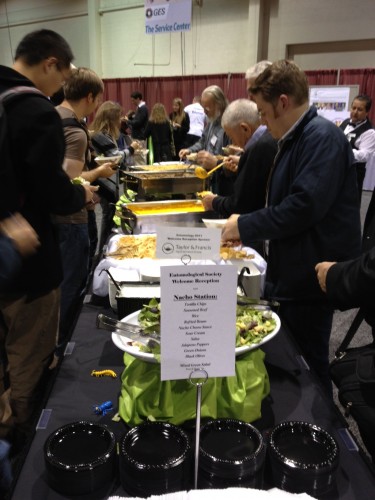After our adventure in Iceland, it was time to move on to Copenhagen, Denmark and kick off my European museum tour in earnest. Arriving after dark on Thursday, I couldn’t see much of the city as I rode public transit from the airport to Dave’s apartment, but the first thing that struck me as I left the subway terminal was the delicious smell of baking bread & pastries! For a moment I wondered whether perhaps Denmark actually smells like actual Danishes (the pastries), but then realized it was just the bakery across the street, much to my disappointment.
Coming from North America, it was striking how cramped city living is in Copenhagen. While the main living rooms of the apartment where I was staying were quite sizeable and charming in an historical kind of way, I soon learned the origins of the term “water closet”. Most places I know have a coat closet directly inside the entrance way, but in this apartment complex at least, that closet has been converted into a full 3-piece bathroom totalling at most 10 square feet of floor space, including that taken up by the toilet and sink! I’ve never seen a room so comically small (yet functional) in my life, and will certainly greet washrooms in Canada and the US with an all new appreciation. Needless to say showering the next morning was an experience, yet surprisingly manageable.
Friday morning I accompanied my hosts Dave & Adam to the University of Copenhagen Museum of Zoology. Walking through the basement hallways, we wandered past a taxidermied horse that was apparently a queen’s favourite, as well as a giant whale skeleton in a loading bay being prepared for the museum’s collection. “Little” details like these make travelling to natural history museums new experiences each and every time, because you never know what you’ll stumble across while you’re there!
The insect collection in Copenhagen is quite expansive, and includes the very important primary type collection of Johan Christian Fabricius (among others). Unfortunately, being more than 200 years old, many of Fabricius’ types are significantly damaged, with many having nothing but odd body parts stuck to a pin, or even an empty pin with naught but a label attached! This will make things a little more difficult in the future as we try and tease apart what these authors were thinking about when they described their species, but that’s the way things go with taxonomy. I’ll be spending another day at the end of my trip here, which is lucky because I didn’t end up getting all the work I wanted to get done, and instead had to do some last minute planning for the next stages of my trip and meeting with a revolving door of visiting scientists in town before the Diptera Congress.
We were up bright & early the next morning (Saturday) and riding the bus across Copenhagen with luggage in tow to pick up my rental car, which luckily turned out to be a massive upgrade from the uber-compact I had booked to a luxury SUV with all the bells and whistles! The unexpectedly nice car will make the road trip even more fun I think, and without the need to play Tetris with our luggage. Also, as it turns out, we were especially lucky to get the upgrade with built in GPS, because the pay-as-you-go cell phone card I picked up in Denmark and was planning on using for navigational purposes stopped working the moment we drove into Germany. I think I’d be somewhere between Rome & Budapest by now had I been relying on road signs, so we’ll chalk this up to luck and good karma.
Driving through Denmark and Germany turned out to not be nearly as tricky as I had worried it might be. There were a few quirks, like Germany’s insistence on placing their traffic signal lights on the near-side of intersections, right above the first person in line’s head and practically impossible to see without a panoramic sunroof (did I mention we were lucky with the car upgrade?), and some exciting new experiences, like taking a mega ferry across the Baltic Sea, and driving on the set-your-own-speed Autobahn highway system in Germany, and we even stopped to look for some insects just outside of Berlin (primarily because we got stuck in a massive traffic jam and needed to stretch our legs for a bit).
We finally arrived in Potsdam at the Kongresshotel, a huge, sprawling resort complex on a river (it might be a lake, I’m not sure), and soon met up with a large group of Dipterist’s who had also come to town early, enjoying a few beverages and a late supper before retiring for the evening. Sunday was a relaxing day for the most part, giving me an opportunity to put the finishing touches on my presentation before we went out to find something to eat nearby. Turns out there isn’t anywhere nearby to eat, but we did manage to wander into what appeared to be an abandoned rowing club and then accidentally crashed a fancy birthday party at the local canoe club… Tourists, I tell ya! We eventually ended up eating back at the hotel, and then attended the opening mixer with nearly 400 Dipterists from around the world! It was a nice evening with plenty of good food, free wine, and great conversations with old friends and new colleagues alike.






